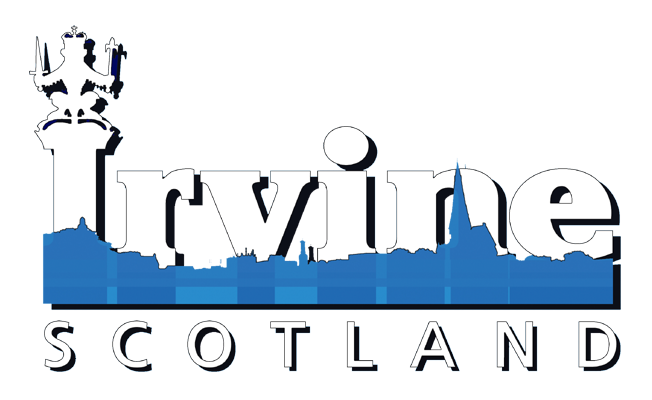Introduction
Although Irvine dates back a thousand years or so, maps showing any detail around the town don’t show up until the 1600’s. In this article I will go through a few of the maps which can be found online.
1654 – Joan BLAEU – CVNINGHAMIA – Cunningham.
source: http://maps.nls.uk/view/00000422
Perhaps the most obvious difference to modern day in this 1654 map, is the fact the Ardeer Peninsula is completely missing. In later maps it is shown as sandbanks so it is possible that it was submerged, or submerged due to tides. Another possibility is that it is simple human errors, remembering at the time that the mapmaker would make simple sketches and later assemble them into his final map, errors often would appear.
It’s easier to see why the port at the Low Green and Seagate was Irvine Port at this time, as it was possible to sail straight out to sea. Also visible are some parts which are now contained within the town itself, such as “Litle Stain”, “Bourtreen”, “Brumlands”, “Kunghamhead” and “Langdreghorn”. Also at this time “Foullartoun” was still completely separate from “Irrwin”. Personally I also found notable that while “Saltcots” and Nethermains are marked to the north of the town, there is no sign of Kilwinning (even under it’s ancient names of ‘Segdoune’ or ‘Saigtown’), I’m sure it’s on there, just not what it’s labelled as.
1775 – Andrew ARMSTRONG – A new map of Ayrshire
source: http://maps.nls.uk/view/74400947
Killwinning does show on this 1775 map however, as does the Ardeer Peninsula, showing the geography very similar to as it is now, and also the map shows the street layout of Irvine in enough detail to see that it broadly resembles the modern town. The East Road, Main Street, Bridgegate, The Old Parish Church and Glasgow Vennel are all clearly visible, and the map predates the creation of Bank Street. What is now Montgomery Street doesn’t quite match up to the modern layout of the town, which again may be mapmakers errors, but it is entirely possible that at this time what is now the harbour was slightly further south in what is now the beach park.
Of some interest is “Irvine Muir” with the Racecourse, “Stone Castle”, “Bowtreehill” and “Broomland” all visible outside the towns borders.
1819 – John WOOD – Plan of the Town of Irvine
source: http://maps.nls.uk/view/74400039
A 1819 Street Map of the town (if you click to the zoomable version online, then every building is listed by its occupant), a very detailed and accurate version of the town. It’s layout is extremely similar to today’s, although Ayr Bank is yet to be demolished to make way for Bank Street, but otherwise we still walk the same streets except for the changes in the centre of the town to make way for the Rivergate Centre and retail park. Fullarton can be seen to still be part of Dundonald Parish, and the existence of a Slaughterhouse at Seagatefoot is interesting. Hill Street (which has old signs showing it’s name as Hill Close) is simply labelled as The Hill, and Montgomery Street is still named “Halfway” at this point (a far superior name in my personal opinion).
1856-1891 – ORDNANCE SURVEY – One-inch 1st edition maps of Scotland
source: http://maps.nls.uk/view/74488611
The most recent map I’ll cover is this Ordinance Survey map published in 1890 (of Kilmarnock which covers most of North Ayrshire too). By this point the town is getting very similar to the modern day version of the town, the Glasgow Railway line now exists, although the branches to the Harbourside and “The Busbie Line” cutting through Dreghorn on its way to Kilmarnock are now both long gone.
Names have changed into their modern versions, with Stanecastle, Bourtreehill, Towerlands, Broomlands, Fullarton, etc all spelt the same way they are now. There are a few which still have older spellings, Newmuir (now Newmoor) is notable, as is the presence of the hamlet of Warrix (now the Warrix Interchange on the A78. Quarry Road and the Duntonknoll Quarry are visible on the map if not marked.
If you’re interested in maps, check out the National Library of Scotland Website, http://maps.nls.uk/counties/ which has many more than just the few I’ve briefly covered here.


